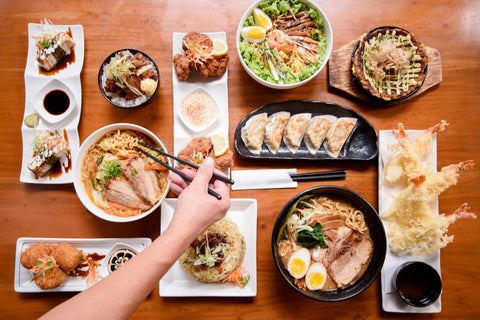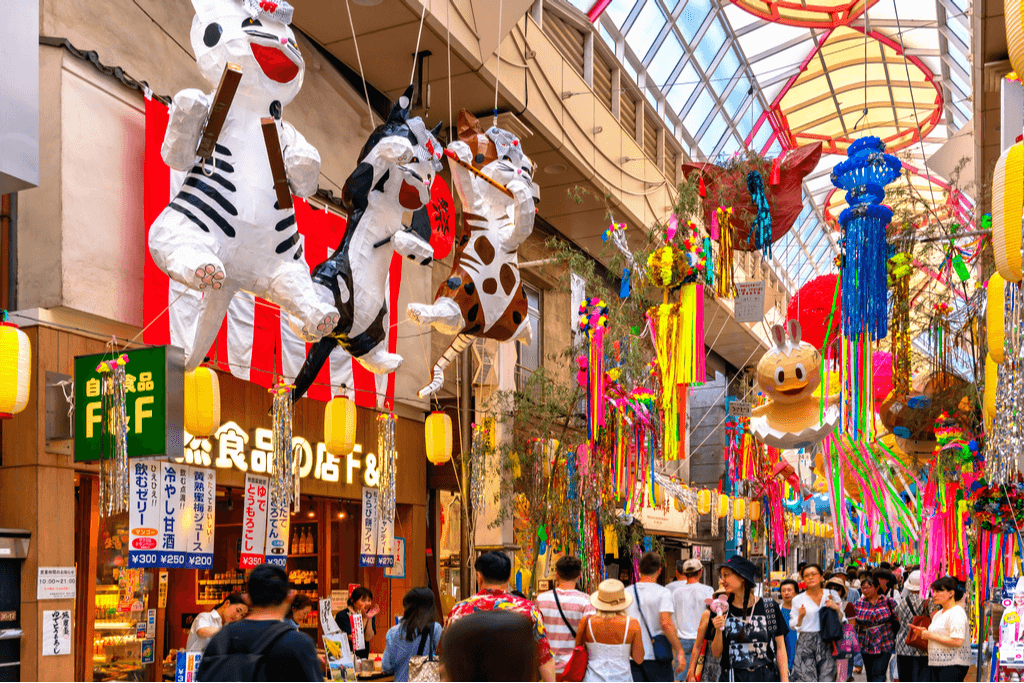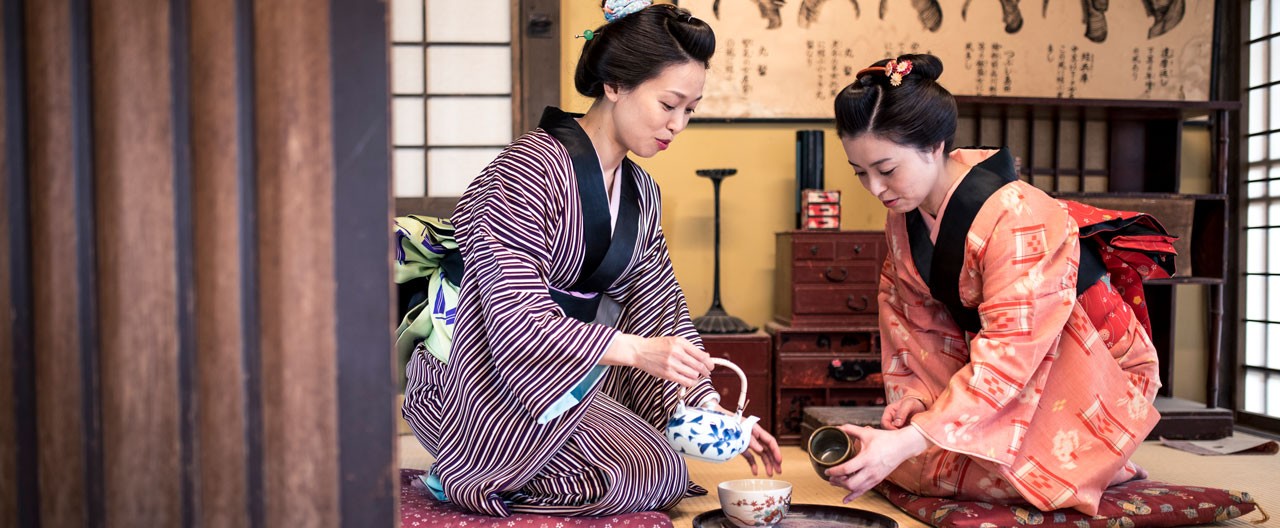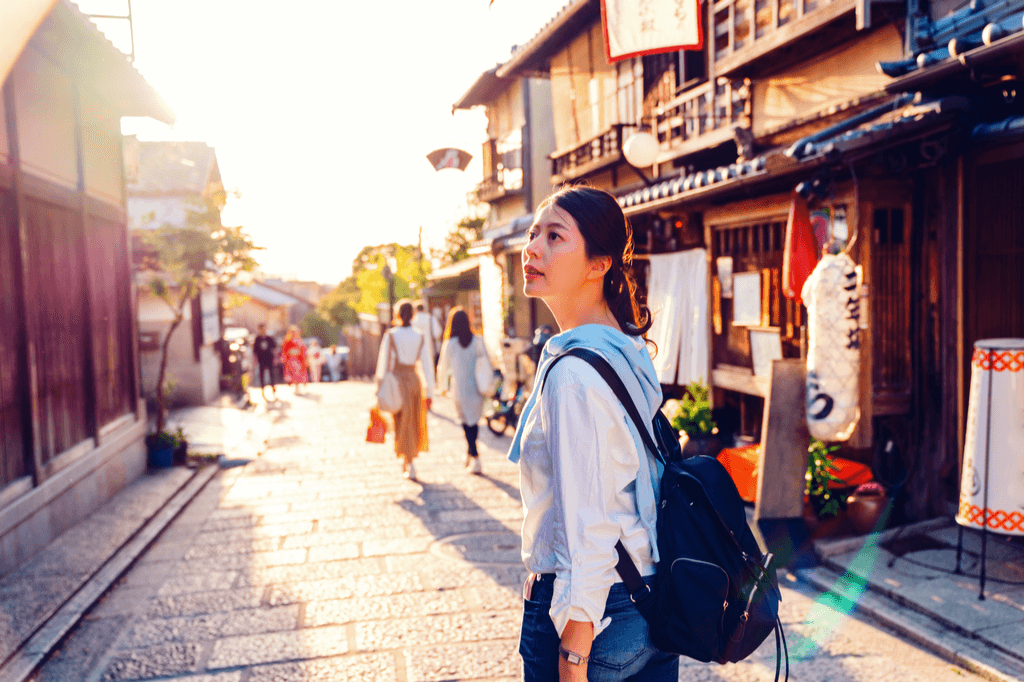Win a Free Trip to Japan!
Experience cherry blossoms and ancient temples
Japan, renowned for its rich tapestry of culture and traditions, invites travelers to explore its unique lifestyle and customs. From the intricate rituals rooted in centuries of history to the vibrant festivals celebrated throughout the year, each aspect tells a story that reflects the values and beliefs of its people. Additionally, the balance between tradition and modernity permeates daily life in Japan, creating a fascinating contrast that captivates both locals and visitors alike. Dive into the captivating realm of Japan lifestyle, and uncover the layers that shape this extraordinary nation.
The rich history of Japan’s culture
The Japan Lifestyle is deeply intertwined with its rich history and cultural roots, shaped by centuries of tradition and change. Several key factors contributed to the development of Japan’s unique culture:
- Geographical Isolation: For much of its history, Japan remained isolated from the rest of the world. This isolation allowed for the nurturing of distinct cultural practices, philosophies, and languages, leading to a unique identity.
- Buddhism and Shintoism: These two primary religions have significantly influenced Japan’s culture. While Shintoism emphasizes the importance of nature and hospitality, Buddhism introduces concepts of tranquility and mindfulness, both of which are crucial in everyday Japanese life.
- Feudalism and Samurai Culture: The samurai class and the feudal system introduced ideas of honor, loyalty, and discipline. This period laid the groundwork for many social customs and values that still resonate in the Japan Lifestyle today.
- Cultural Exchange: Despite its isolation, Japan experienced waves of influence from China and Korea, impacting art, architecture, and philosophy. For instance, Chinese writing systems and Buddhist texts permeated Japanese culture, enriching it further.
In summary, the rich history of Japan’s culture has fostered unique customs and practices that define the Japan Lifestyle today. From ancient rituals to modern perceptions, this layered history creates a fascinating backdrop for understanding Japan.

Traditional Japanese customs and their significance
Traditional Japanese customs represent the heart of the Japan lifestyle, embodying values, history, and social structures that have thrived for centuries. Understanding these customs is crucial for appreciating the unique cultural fabric of the country.
Here are some notable traditional customs and their significance:
- Omotenashi: This refers to the spirit of selfless hospitality. In Japan, this means anticipating guests’ needs without expecting anything in return, demonstrating respect and care, essential elements of the Japan lifestyle.
- Hanami: The practice of cherry blossom viewing highlights the importance Japanese society places on nature and transient beauty. This custom encourages people to gather, celebrate, and appreciate the fleeting beauty of life.
- Tea Ceremony (Chanoyu): This intricate tradition promotes mindfulness and aesthetic appreciation. The ceremonial process reflects harmony, respect, purity, and tranquility, which are key values in Japan lifestyle.
- Matsuri (Festivals): Throughout the year, various festivals celebrate seasonal changes and community spirit. Each matsuri has unique rituals and significance, often rooted in historical practices, making them a vibrant aspect of Japanese life.
- Obon: A spiritual custom that honors ancestors, Obon emphasizes familial connections and respect for lineage, reinforcing strong community ties.
These customs, among many others, not only enrich the Japan lifestyle but also foster a sense of identity and continuity in a rapidly changing world.
The Importance of Etiquette in Japanese Society
In Japan, etiquette plays a pivotal role in daily interactions, shaped by centuries of cultural tradition. Understanding these customs enhances your experience of the Japan lifestyle, allowing for a deeper appreciation of its rich heritage. Here are key aspects that illustrate the significance of etiquette:
- Respect and Politeness: Formal greetings, such as bowing, express respect and are integral to social interactions. The depth of the bow often indicates social status and relationship closeness.
- Gift Giving: Presenting gifts, especially during visits or special occasions, is customary. The presentation matters as much as the gift itself; it shouldn’t be overly extravagant.
-
Dining Etiquette:
- Chopsticks: Never stick chopsticks upright in rice, as it resembles funeral rites. Instead, place them on a holder between uses.
- Slurping Noodles: Contrary to Western norms, slurping signifies enjoyment of the meal.
- Public Behavior: Speaking quietly, keeping your distance in public transport, and removing shoes in homes are vital practices that reflect the Japan lifestyle.
By embracing these elements, visitors can navigate social situations gracefully and show respect for the local culture. Ultimately, understanding Japanese etiquette fosters positive connections and enriches your overall experience in Japan.
Culinary Traditions and Regional Specialties
When exploring the Japan lifestyle, one cannot overlook its rich culinary traditions and regional specialties. Japan boasts a diverse food culture, nourished by its geography, seasons, and historical influences.
Highlights of Japanese Cuisine
- Rice: The staple food in Japan, served with nearly every meal.
- Sushi: A world-renowned dish that combines vinegared rice with seafood, vegetables, or other ingredients.
- Ramen: A flavorful noodle soup that varies by region, featuring broth styles like shoyu (soy sauce), miso, and tonkotsu (pork bone).
Regional Specialties
Japan’s landscape shapes its culinary offerings, creating distinct regional flavors:
| Region | Specialty | Description |
|---|---|---|
| Hokkaido | Jingisukan (Genghis Khan) | Grilled lamb dish cooked with vegetables. |
| Kyoto | Kaiseki | Elegant multi-course meal featuring seasonal ingredients. |
| Osaka | Takoyaki | Octopus-filled savory pancakes, a beloved street food. |
| Hiroshima | Okonomiyaki | Savory pancakes with various fillings unique to the region. |
| Fukuoka | Hakata Ramen | Rich pork broth ramen, famous throughout Japan. |
Seasonal Influences
Japanese cuisine also emphasizes seasonal ingredients, with dishes changing according to the time of year. For instance:
- Sakura mochi in spring, celebrating cherry blossoms.
- Chirashi sushi in summer, made with colorful toppings over rice.
Ultimately, the culinary traditions and regional specialties of Japan not only satisfy the palate but also reflect the country’s rich lifestyle and cultural heritage. Each dish tells a story, connecting the people to their land and history in a unique way.

Festivals and Celebrations Throughout the Year
Japan’s vibrant culture shines through its numerous festivals and celebrations, which reflect the rich tapestry of the Japan lifestyle. These events not only showcase traditional customs but also strengthen community bonds and foster national pride. Here are some of the most notable festivals celebrated throughout the year:
- New Year’s (Shogatsu): The most important celebration, featuring rituals like visiting shrines and enjoying special foods called Osechi.
- Hanami (Cherry Blossom Viewing): In spring, people gather under blooming cherry trees to appreciate the beauty of nature and share picnics with friends and family.
- Tanabata (Star Festival): Held in July, this festival celebrates the meeting of two stars, and people write wishes on colorful strips of paper to hang on bamboo branches.
- Gion Matsuri: Taking place in Kyoto every July, it features a parade of elaborate floats and traditional performances, attracting visitors globally.
- O-bon: In mid-August, this Buddhist festival honors deceased ancestors with lanterns, song, and dance, embodying respect for the past.
Comparison of Festivals
| Festival | Month | Main Activities | Cultural Significance |
|---|---|---|---|
| New Year’s | January | Shrine visits, Osechi meals | Spiritual renewal and family unity |
| Hanami | March-April | Outdoor picnics, flower viewing | Appreciation of nature’s beauty |
| Tanabata | July | Wishing on bamboo | Hopes and aspirations for the future |
| Gion Matsuri | July | Parades, traditional performances | Celebration of local heritage |
| O-bon | August | Lanterns, dances | Honoring ancestors |
Engaging in these festivities allows one to immerse themselves in Japan’s lifestyle, experiencing the country’s rich heritage and communal spirit. Each celebration uniquely contributes to understanding Japan’s philosophy of life and the importance of tradition in everyday existence.
The Influence of Religion and Spirituality in Daily Life
Religion and spirituality play a pivotal role in shaping the Japan lifestyle, intricately woven into the daily routines and practices of its people. Shintoism and Buddhism are the two dominant religions, influencing various aspects of life through rituals, festivals, and customs.
Everyday Practices
-
Morning Rituals:
- Many Japanese begin their day with a simple ritual of visiting a shrine or temple, seeking blessings for a prosperous day.
-
Life Milestones:
- Births, weddings, and funerals often involve religious ceremonies that reflect deep spiritual beliefs.
-
Seasonal Festivals:
- Events like Hanami (cherry blossom viewing) and Obon (ancestor worship) highlight the connection to nature and ancestry, emphasizing the spiritual appreciation of life’s cycles and seasons.
Spirituality in Community
-
Local Shrines and Temples:
- Communities often gather at local shrines for celebrations, reinforcing social bonds and collective identity.
-
Meditation and Mindfulness:
- Practices such as Zen meditation have gained popularity, reflecting a broader interest in mindfulness rooted in spirituality.
This rich tapestry of religious influence creates a unique Japan lifestyle, where daily activities harmonize with tradition and spiritual significance, fostering a profound respect for both the past and the present. Such practices not only solidify personal spiritual journeys but also enrich community ties, making religion an integral part of Japanese life.
Art forms and crafts: Preserving heritage
The vibrant Japan Lifestyle richly intertwines tradition and modernity, particularly evident in its art forms and crafts. These elements serve not only as aesthetic expressions but also as vital links to Japan’s long-standing heritage.
Key Traditional Art Forms:
- Ikebana: The art of flower arrangement, focusing on harmony and balance.
- Origami: Paper folding that transforms simple sheets into intricate designs, reflecting patience and precision.
- Calligraphy (Shodo): Beautiful writing that emphasizes brush strokes, conveying deep meanings and emotions.
- Pottery (Fuurin): Crafting ceramics that embody local materials and techniques, preserving regional identities.
Significance of Crafts:
- Cultural Identity: Each craft tells a story, passing down values and beliefs through generations.
- Social Bonding: Many art forms require collaboration, thereby strengthening community ties.
- Economic Impact: Artisans contribute to local economies, fostering pride in traditional skills.
Comparison of Traditional vs. Contemporary:
| Aspect | Traditional Art Forms | Contemporary Art Influences |
|---|---|---|
| Materials Used | Natural materials (bamboo, clay) | Mixed media, industrial elements |
| Purpose | Ritualistic, functional | Conceptual, abstract |
| Techniques | Handcrafted, simplistic | Technologically advanced, experimental |
Overall, Japan’s commitment to preserving its art forms and crafts is a testament to the resilience of the Japan Lifestyle, where historical significance and artistic innovation coexist harmoniously.

Modern Lifestyle Contrasts in Urban Japan
The Japan Lifestyle reflects a remarkable blend of the traditional and the modern, especially in bustling urban areas like Tokyo and Osaka. Here, you can witness sharp contrasts that define contemporary life.
Urbanization vs. Tradition:
- Skyscrapers and Shrines: Amidst towering skyscrapers and neon lights, traditional shrines and temples stand as serene reminders of Japan’s rich history.
- Cutting-edge Technology and Traditional Craftsmanship: Urban centers feature high-tech innovations, yet many artisans still practice age-old crafts, such as pottery and textiles.
Work Culture and Leisure:
- Extensive Work Hours: Many urban Japanese adhere to a rigorous work ethic, often clocking long hours. However, the concept of "hanami" (flower viewing) offers a brief respite, encouraging people to enjoy nature amidst their busy schedules.
- Unique Dining Experiences: Urban areas showcase a variety of dining options, from Michelin-starred restaurants to cozy street food stalls, each presenting a distinct culinary experience.
Transportation:
- Efficient Public Transport: Japan boasts one of the most efficient public transport systems globally, allowing easy access to both urban and rural locations.
- Bicycles and Walkable Cities: In contrast, many neighborhoods promote cycling and walking, promoting a healthier lifestyle and reducing carbon footprints.
In conclusion, the modern Japan Lifestyle in urban areas features a vibrant interplay of the old and the new, continually shaped by social, technological, and environmental changes. This duality encapsulates the essence of life in contemporary Japan.
The Role of Nature and Gardens in Japanese Culture
Nature holds a profound significance in the Japan Lifestyle, seamlessly integrating with daily life and spiritual practices. Japanese culture celebrates the beauty of nature through various elements:
-
Gardens: Renowned for their intricate designs, Japanese gardens serve as tranquil retreats. They often feature:
- Stone lanterns
- Miniature pine trees (bonsai)
- Koi ponds, symbolizing peace and prosperity
- Seasonal Appreciation: From cherry blossoms in spring to vibrant maple leaves in autumn, the seasonal changes inspire deep emotional connections. The concept of “Mono no aware”, or the sensitivity to the beauty of ephemeral things, reflects this appreciation.
-
Shinto Beliefs: Nature is revered in Shinto, Japan’s indigenous religion. Sacred sites, such as:
- Shrines nestled within forests
- Mountains seen as divine entities
These locations illustrate the spiritual relationship between people and nature in the Japan Lifestyle.
- Zen Philosophy: Influencing garden designs, Zen emphasizes simplicity and tranquility. The karesansui (dry landscape) gardens, with their minimalist aesthetics, embody meditation and reflection.
In summary, the connection between nature and gardens profoundly influences the Japan Lifestyle. It fosters peace, encourages mindfulness, and showcases the deep respect Japanese people hold for their natural surroundings.
Japanese Fashion: Tradition Meets Modernity
Japanese fashion exemplifies a fascinating blend of rich traditions and contemporary trends. As one of the world’s fashion hubs, Japan lifestyle reflects a unique approach where historic craftsmanship meets avant-garde designs. Here are key aspects illustrating this fusion:
-
Traditional Garments:
- Kimono: A timeless symbol of Japanese culture, often worn during special occasions.
- Yukata: A casual summer garment, usually made of cotton, popular during festivals.
-
Modern Influences:
- Street Fashion: Cities like Harajuku showcase colorful, eclectic styles that challenge conventional norms.
- High Fashion: Designers such as Issey Miyake and Yohji Yamamoto merge traditional motifs with modern silhouettes.
-
Cultural Significance:
- Traditional pieces often feature intricate patterns and are crafted with great care, reflecting Japan’s deep-rooted appreciation for artistry.
- Contemporary fashion embraces these designs while promoting creativity and self-expression.
Comparison of Traditional vs. Modern Japanese Fashion
| Feature | Traditional Fashion | Modern Fashion |
|---|---|---|
| Materials | Silk, cotton, hemp | Synthetics, denim |
| Occasions | Festivals, weddings | Everyday, runway |
| Design | Ornate, layered | Minimalist, bold |
In summary, the Japan lifestyle encapsulates a dynamic perspective on fashion, where tradition seamlessly intertwines with modernity. This creative juxtaposition not only preserves the cultural heritage but also allows for innovative expressions in the fashion industry.
Frequently Asked Questions
What are some unique customs in Japan that visitors should be aware of?
Japan is rich in unique customs that visitors should not miss experiencing. One prominent custom is bowing, which serves as a form of greeting, expressing gratitude, or showing respect. Additionally, removing shoes before entering homes and certain traditional inns is a common practice, promoting cleanliness and humility. Dining etiquette is also important; for example, it is considered polite to say ‘Itadakimasu’ before meals and ‘Gochisousama’ after finishing eating. Finally, respecting the concept of ‘wa’, or harmony, is vital, influencing social interactions and business practices.
How is the Japanese work culture different from other countries?
Japanese work culture is notably different from that of many Western countries in several respects. Emphasis is placed on teamwork and collective decision-making, often leading to longer hours as employees strive to demonstrate dedication and commitment. There’s a strong respect for hierarchy and seniority, influencing relationships in the workplace. Moreover, the concept of ‘karoshi’, or death from overwork, highlights the potential downsides of this intense work pressure. Balance is slowly improving, with more focus on work-life balance and mental health, fostering a more sustainable work environment.
What traditional festivals should I experience while in Japan?
Japan boasts a colorful array of traditional festivals, or ‘matsuri’, reflecting its rich cultural heritage. One of the most famous is the Gion Matsuri held in Kyoto, celebrated every July with parades of elaborately decorated floats. The Aoi Matsuri, also in Kyoto, features participants in Heian-era costumes and occurs in May. The Nebuta Matsuri in Aomori is a vibrant festival held in August known for its massive illuminated floats. Each festival provides a unique glimpse into Japanese traditions, making them must-see experiences for visitors.
What is the significance of tea ceremonies in Japanese culture?
The Japanese tea ceremony, known as ‘chanoyu’ or ‘sado’, transcends mere drinking of tea to embody deep philosophical principles, aesthetics, and social harmony. Rooted in Zen Buddhism, the ceremony emphasizes mindfulness and appreciation for simplicity and natural beauty. Participants engage in meticulous preparation and serving of matcha, a powdered green tea, in a peaceful and meditative setting. The act symbolizes respect among the host and guests, creating connections and fostering harmony. Experiencing a tea ceremony can offer profound insight into Japanese culture and its value of ritual.
How can I embrace the Japanese lifestyle during my visit?
Embracing the Japanese lifestyle during your visit involves immersing yourself in its customs and traditions. Begin by learning basic Japanese phrases, which shows respect towards the culture and enhances your interactions. Participate in local practices, such as wearing a kimono for a day or taking part in a traditional tea ceremony. Eating at local izakayas or participating in a community event can deepen your experience. It’s also important to adapt to local etiquette, like bowing when greeting, which helps foster connections with locals and enrich your journey.
